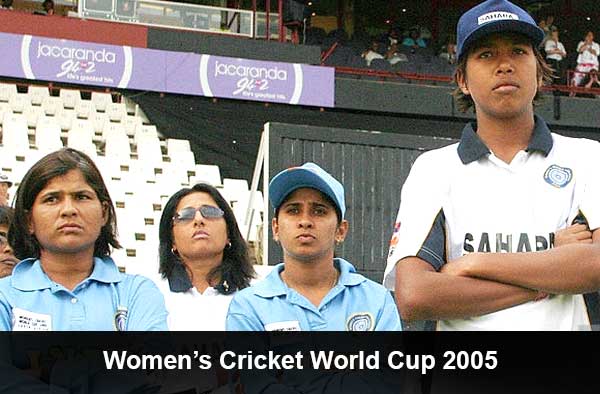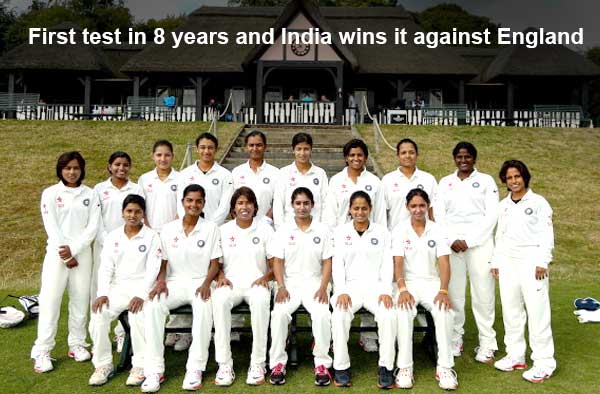In 2006, the richest cricket board, following the trend, took over The Women Cricket Association of India and merged it with BCCI. Female cricket lovers, excited, thought that now with BCCI, female cricket will thrive to its glory. The contemporary women cricket world continued to prosper as the days went on but the public or the board kind of paid no heed to the female voices of the game of the cricket. Both in England and Australia, the “gentle men’s” game provided the spaces for their female counterparts and at the same time the administration as well as the common people gave the due attention to the players.

Whereas in India, female cricketers had to fight for their subsistence. Both in the sphere of monetary gain as well as in the number of the matches they played, female cricketers were denied off their half of right. After long wait of 10 years though they were put under the central contract and NCA has been opened to them but it will be totally unfair to call this minimal facilities as “development”. Even if we take the number of matches played before and after the “watershed year” of 2006 and side by side compare those numbers with not only men side but also with the contemporary 3 super power team of female cricket – Australia, England, New Zealand and make a microscopic observation then the actual scenario will be evident to us.
1. Men’s Team and Women’s Team In 2006-16 (number of matches)
|
Country |
Men’s Team (ODI’s) |
Women’s Team |
Women’s team played matches in comparison with men’s (%) |
|
India |
300 |
95 |
31.67% |
|
England |
246 |
130 |
52.84% |
|
Australia |
273 |
119 |
43.58% |
|
Newzeland |
221 |
126 |
57.01% |
Read More : India demands Women’s IPL
From above Table.1 it’s visible that among the four teams, India is ranked 4th amongst the 4. Where England and New Zealand women played more than 50% of the matches of their male counterparts India have only played 32% in this last 10 years. Now of these 95 matches in almost 10 years 18 matches has come in last one and a half year as the part of ICC women Championship and if you talk about the remaining matches there was multi-nation ICC championship like 2009,2013 world cups and Asia Cups . That mean the number of bilateral series and matches will drop down to almost 60 matches in 10 years. Quiet a “development” indeed.

2. Comparison between ODI matches played during Autonomous WCAI and BCCI
|
Country |
1978-2006 |
2006-2016 |
Down (%) from (1978-2006 time span) |
|
India Women |
139 |
95 |
-(37.31)% |
|
Australia Women |
183 |
119 |
-(34.97)% |
|
England Women |
184 |
130 |
-(29.34)% |
|
Newzealnd Women |
187 |
126 |
-(32.08)% |
Now from this 2nd Table it is evident that in all these countries the drastic decline in the number of the matches. But we have to keep in mind the time span. First of all the first column comprise of almost 30 years of stat where as the second column keeps the record of 10 years. But what is important in all these is that the percentage of decreasing number of the matches in these countries, where India “Tops” this time with 37% in the decline in the number of the matches in the era of BCCI compared to that of the time of Women Cricket Association of India (WCAI). “Congratulation” must be given to BCCI.}

3. Comparison between Men and Women Team of India, Australia, England and New Zealand at the two different time span.
|
ODI(s)during time span WCAI(1976-2006) |
ODI(s) during time span of BCCI(2006-2016) |
|
||||||
|
Country |
Men |
Women |
+/-(%) |
Country |
Men |
Women |
-/+(%) |
Increase in (%) of number of matches compared with men team |
|
IND |
632 |
139 |
21.99% |
IND |
300 |
95 |
31.67% |
+ (9.68%) |
|
AUS |
619 |
183 |
29.56% |
AUS |
273 |
119 |
43.58% |
+ (14.02%) |
|
ENG |
428 |
184 |
42.99% |
ENG |
246 |
130 |
52.84% |
+ (9.85%) |
|
NZ |
501 |
187 |
37.32 |
NZ |
221 |
126 |
57.01% |
+ (19.69%) |
To conclude, in the above table 3. I have tried to show how the matches varied in not only different time and space but also in different gender. Though the matches played by the girls has increased during the reign of BCCI and respective boards than that of Autonomous female cricket boards in these countries but in that case the growth was whooping in Newzeland(increased by 19%) where as India lagged behind(9%). And not surprisingly, all the time the “Female Voices” were maid the subject of ignorance. And It’s not the cases of ODI’s, the drastic difference in the number of the test match played can be seen as well.

I’m not denying the fact the Female cricketers were given more facilities and money than before. But still then a question rises. Is the facilities enough? Can they match that of Men’s or the other countries? Many of the matches are still not televised. The Official Website of BCCI still haven’t put the female players name under the Category “INDIAN TEAM”. As if they are not recognizing the female counterparts as Indian Team. Still in this era of Globalization and Commercialization Female cricket is still in under the blanket.
Hasn’t the time come to hear the unheard voices of those girls who also represent our country and ignore them no more? Hasn’t the time have arrived to cherish the past of them and secure their future, so that no girl will leave cricket to cherish a new dream?
As a female cricket lover, we all should share our voices to support Santa Rangaswami’s -“I Demand More”. More not for only India but also for the whole female cricket fraternity because cricket is for all, devoid of any discrimination of sex, caste, colour, religion or creed.
Let the world be the play ground for all and let the spirit of this beautiful game held high.
Also Read : Women’s Cricket World Cup 2017 schedules are out!